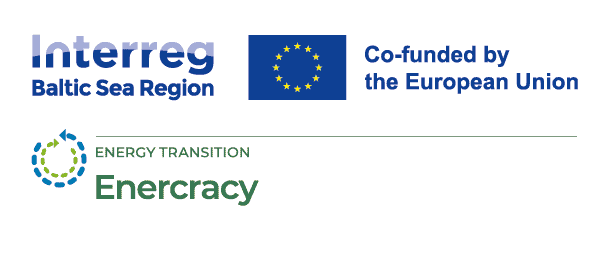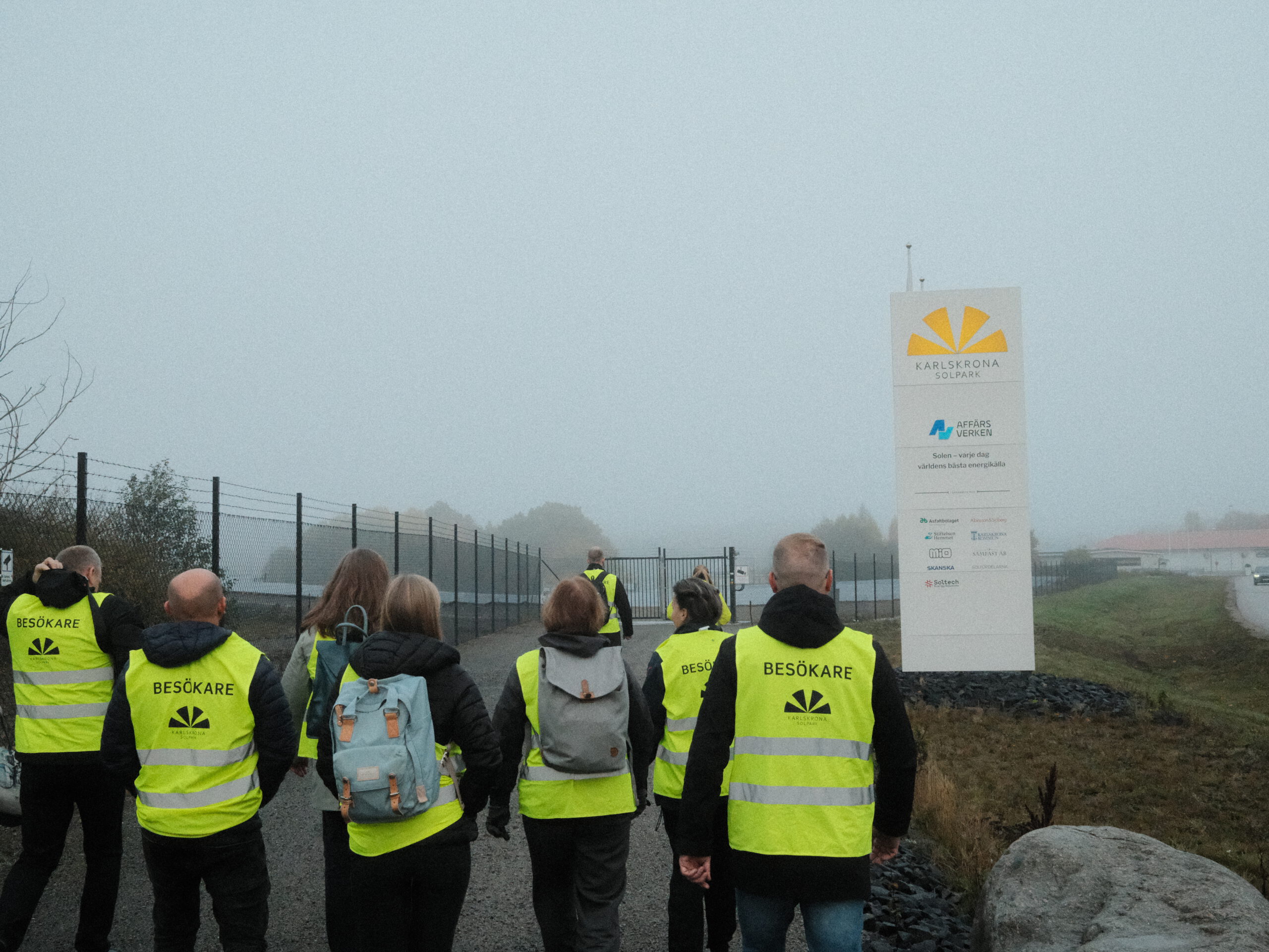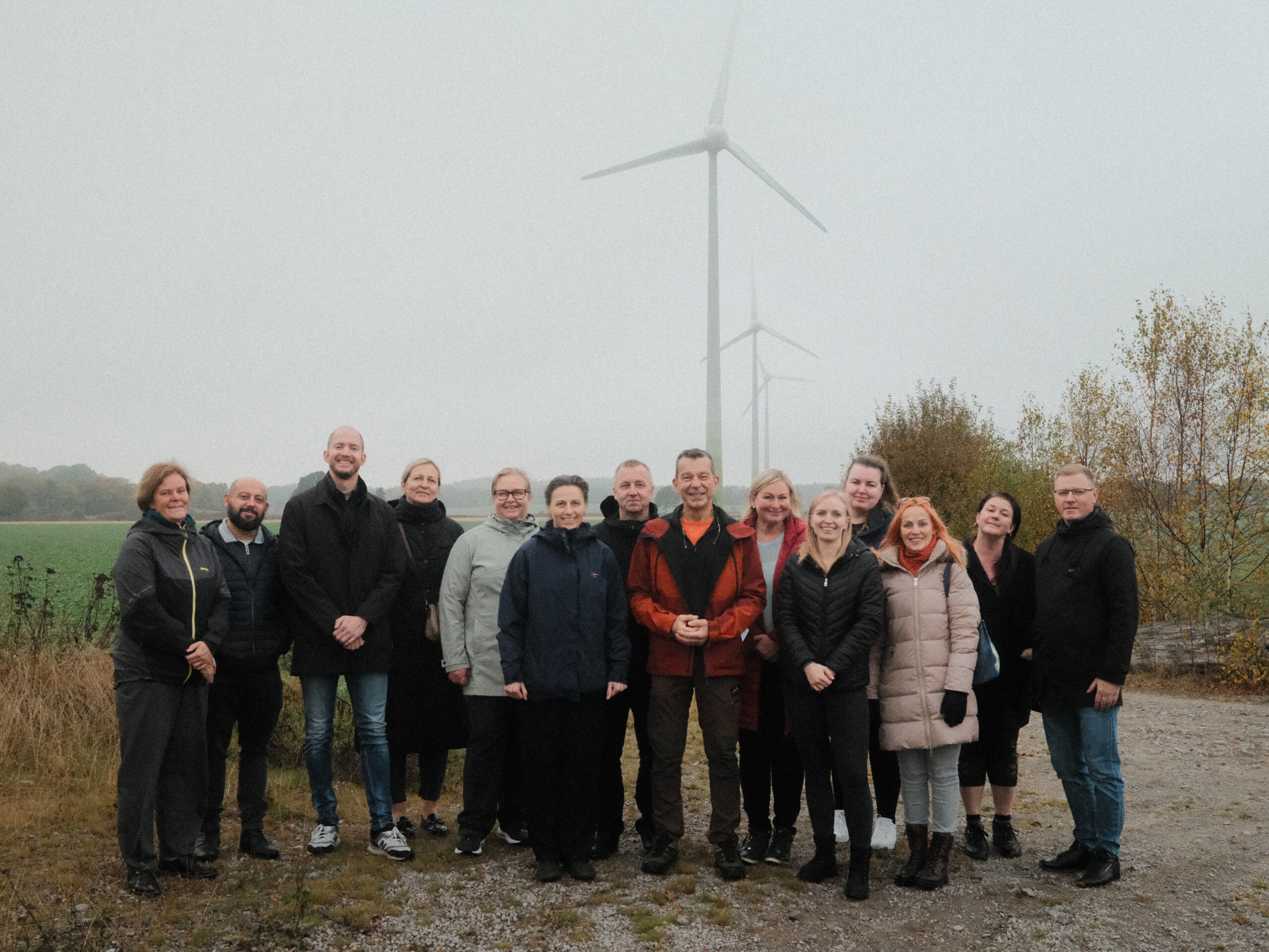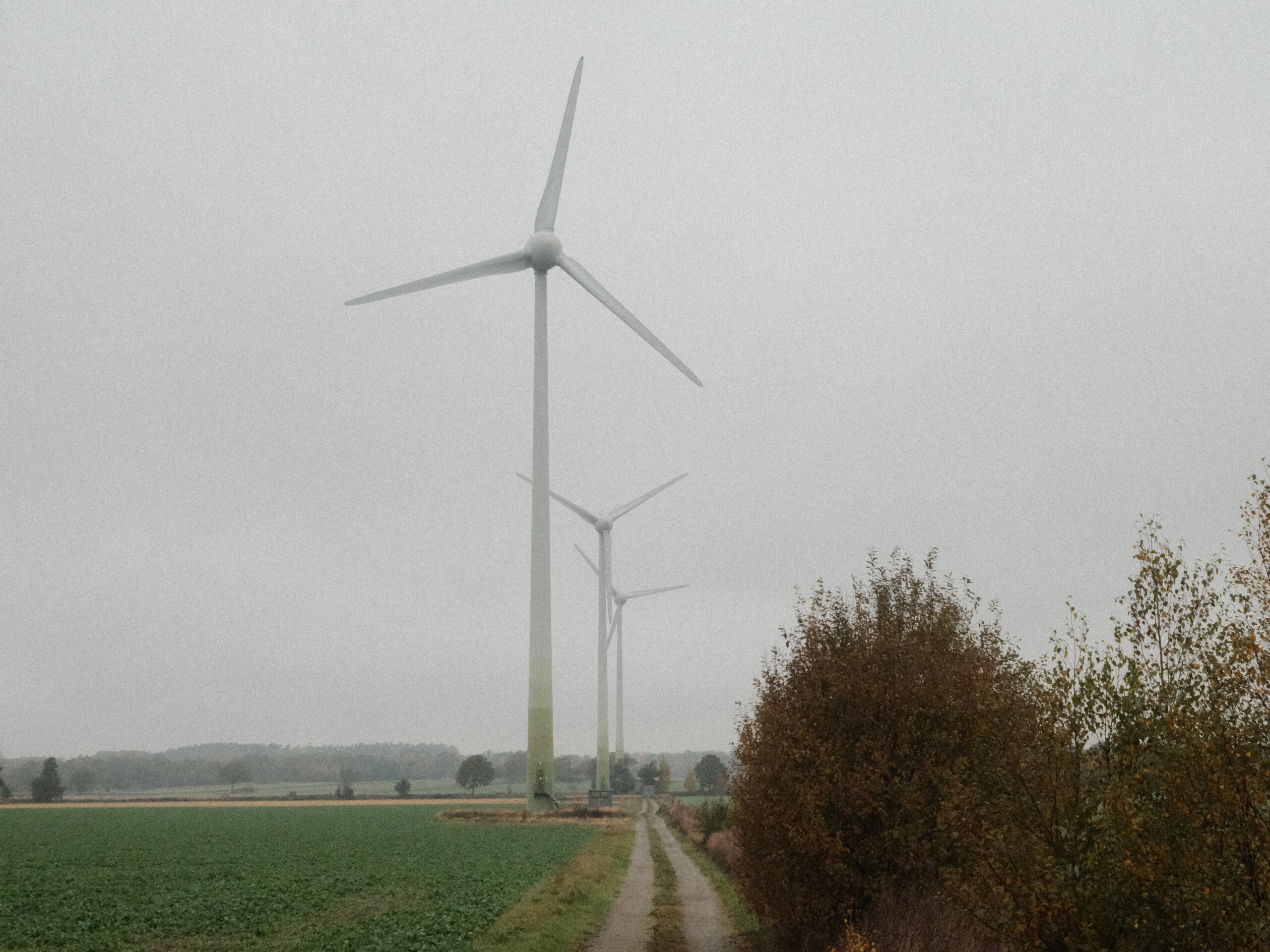
Example in Action: Exploring Local Energy Initiatives in Blekinge
05 November 2025
Karlskrona Solar Park – Turning Challenges into Opportunities
The visit began at Karlskrona Solar Park, where Anna Hammartorp, Business Area Manager Energy at Affärsverken, presented a unique solution to a complex environmental challenge. The site, heavily polluted with mercury and other hazardous substances, is unsuitable for construction or traditional land use. Instead of leaving the area idle, Affärsverken developed a method to install solar panels without disturbing the soil—by placing them on heavy boxes that rest on the surface.
This approach transforms a problematic site into a productive asset for renewable energy. The solar park is owned by a cooperative with 400 members, including private households, housing associations, companies, and organizations. Membership is tied to being an electricity customer at Affärsverken, and returns from electricity production are credited directly on the electricity bill.
The cooperative model lowers the threshold for participation in solar energy, especially for those living in apartments or without access to suitable rooftops. It also fosters a sense of ownership and transparency, with live production data available online. The initiative exemplifies how technical and social innovation can go hand in hand to unlock new opportunities for green energy.
Blekinge Vindkraft – Wind Power by the People, for the People
In Ramdala, Per-Ola Frisell, Share Owner, introduced Blekinge Vindkraft, a wind power cooperative founded in 2000 by 47 local residents. The cooperative has since grown to 240 members and operates three wind turbines across Blekinge, producing a total of 8.4 GWh of electricity annually—enough to power over 800 households.
The turbines vary in size, from 800 kW to 2,000 kW, and are strategically placed from Sölvesborg in the west to Ramdala in the east. The cooperative model enables individuals and companies to become wind energy producers at a reasonable cost, while also allowing them to participate in decision-making and receive dividends based on the financial performance of the wind energy project.
This example demonstrates how local ownership can democratise energy production and foster stronger community ties. It also demonstrates that long-term commitment and shared responsibility are essential components in the success of renewable energy projects.
Södra Cell Mörrum – Industrial Symbiosis and Circular Energy
At Södra Cell in Mörrum, Daniella Johansson, Energy Coordinator, together with her colleagues, presented the company’s sustainability strategy, which integrates forestry, bioenergy, and district heating. Södra Cell produces pulp and tall oil from forest-based raw materials, which are refined into a wide range of products used in everyday life.
Many products made from materials originating from paper mills, such as Södra Cell Mörrum, are commonly found in households, often without consumers being aware of their origin. The mill’s production includes:
- Paper pulp, which is used for tissue paper, tea bags, brochures, copy paper, labels, baking paper, books, newspapers, and coffee filters.
- Dissolving pulp, which is used in the production of textiles and hygiene products, including clothing, cellophane, Wettex cloths, wet wipes, and dyes.
- Energy products, such as biofuels like HVO, which are derived from tall oil—a by-product of the pulp process. The facility also generates large amounts of residual heat, which is used to produce electricity sufficient to meet the entire energy demand of the factory. Surplus heat is further utilised for district heating in the nearby town of Karlshamn.
This integration of material production and energy recovery is a strong example of how industrial processes can contribute to both climate goals and local energy systems. It also highlights the potential of forest-based industries to play a key role in the transition to a circular and renewable economy.
Karlshamn’s district heating system is a prime example of industrial symbiosis. Approximately 93% of the heat comes from residual energy at Södra Cell, with the remaining share provided by other industries and Karlshamn Energi’s own facilities. The system supplies heating to half of the town’s households and most public buildings, with 99% of the heat being renewable.
The site visit included a tour of the production process, from timber delivery to finished pulp, and showcased the diversity of sustainable products derived from forest materials. The presentation emphasised the importance of resource efficiency and the potential of industrial actors to contribute to local energy systems.
Hällaryd Energy Cooperative – Local Solutions for Rural Heating
During the return journey, Ulf Hansson, Climate and Energy Strategist at the County Administrative Board of Blekinge, presented the Hällaryd Energy Cooperative. Located in a rural part of Karlshamn municipality, Hällaryd was too remote to connect to the main district heating system. Instead, the community developed its own solution based on local collaboration.
The system was initially powered by a pellet boiler serving seven municipal buildings, including an old school library, a new school, a kitchen and canteen, an old townhouse, a home for the elderly and an apartment house. The system was later redesigned due to concerns about air quality. The new setup includes:
- District heating was replaced by several ground source heat pumps with a total of 40 boreholes
- A new heat recovery ventilation system was installed in the school and preschool building
- Photovoltaic system installed on preschool, 328 square meters and maximum power of 74 kilowatts.
These measures resulted in a 70% reduction in energy consumption, demonstrating that small communities can achieve reliable and sustainable heating while lowering their operating costs. The initiative also emphasises the importance of tailoring energy solutions to local conditions and engaging stakeholders in the process.
Insights and Inspiration for the Energy Transition
The study visit in Blekinge offered concrete examples of how the energy transition can be realized through local engagement, technical innovation, and cooperative models. Each initiative—whether a solar park on contaminated land, a community-owned wind farm, an industrial district heating system, or a rural energy cooperative—reflects a commitment to sustainability and shared responsibility.
Initiatives that include people in the energy sector are not only about making an investment for economic return; they empower individuals, foster collaboration, and strengthen social cohesion. Community ownership and participation create a sense of belonging and agency, which in turn enhances public support and long-term commitment to energy projects. The cooperative models in Karlskrona and Ramdala demonstrate how democratising energy production can lead to more equitable access and greater transparency, while also fostering trust among stakeholders.
Moreover, the adaptability of solutions—such as the tailored heating system in Hällaryd—demonstrates how local knowledge and community-driven decision-making can lead to more effective and sustainable outcomes. These initiatives prove that when communities are actively involved, energy systems become more resilient, inclusive, and responsive to real needs.
These examples show that the energy transition is not only about replacing fossil fuels with renewables. It is also about rethinking ownership, building trust, and creating systems that are inclusive, resilient, and adapted to local conditions. The visit underscored the value of learning from each other and working together across sectors and borders to shape a greener future.









